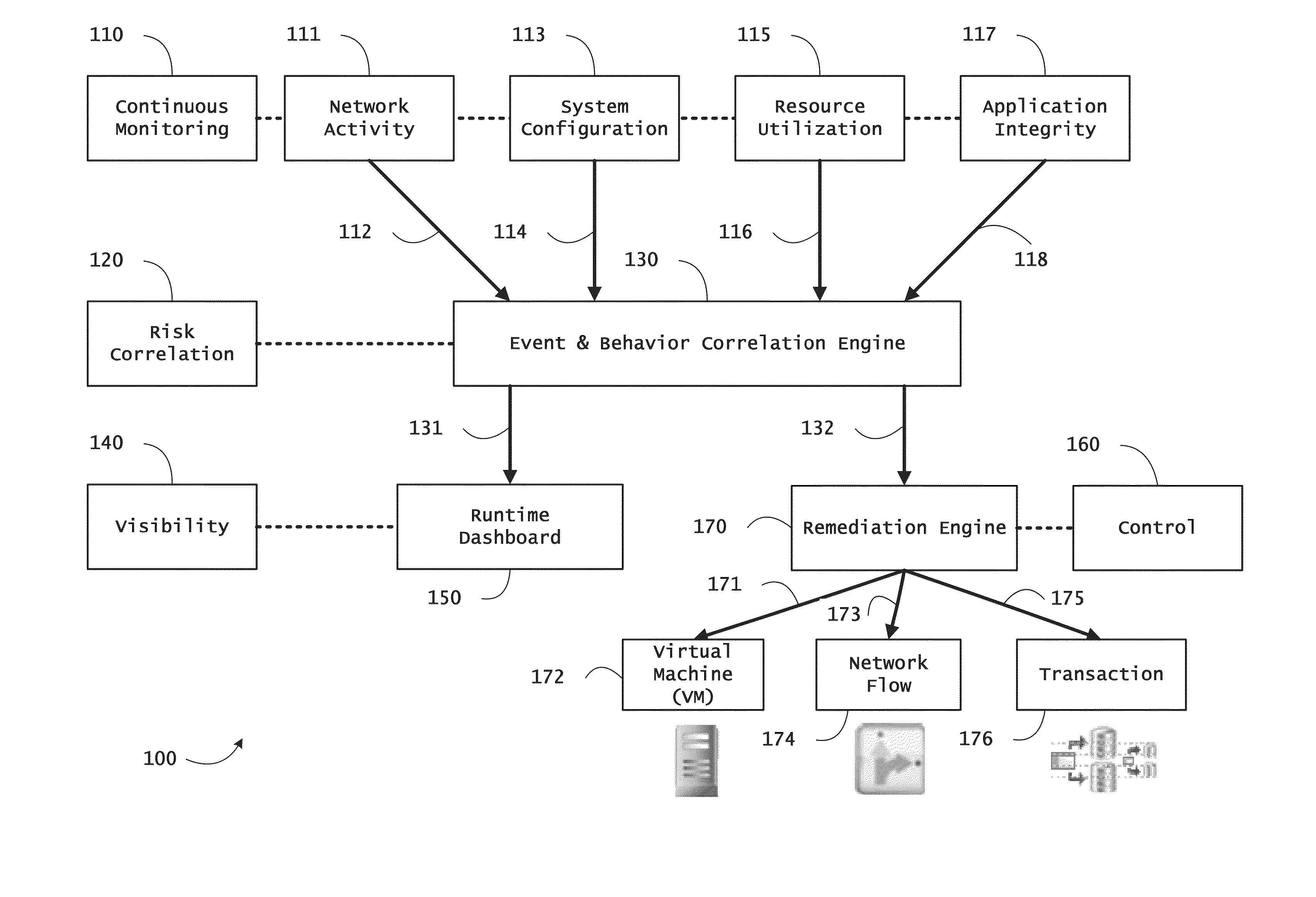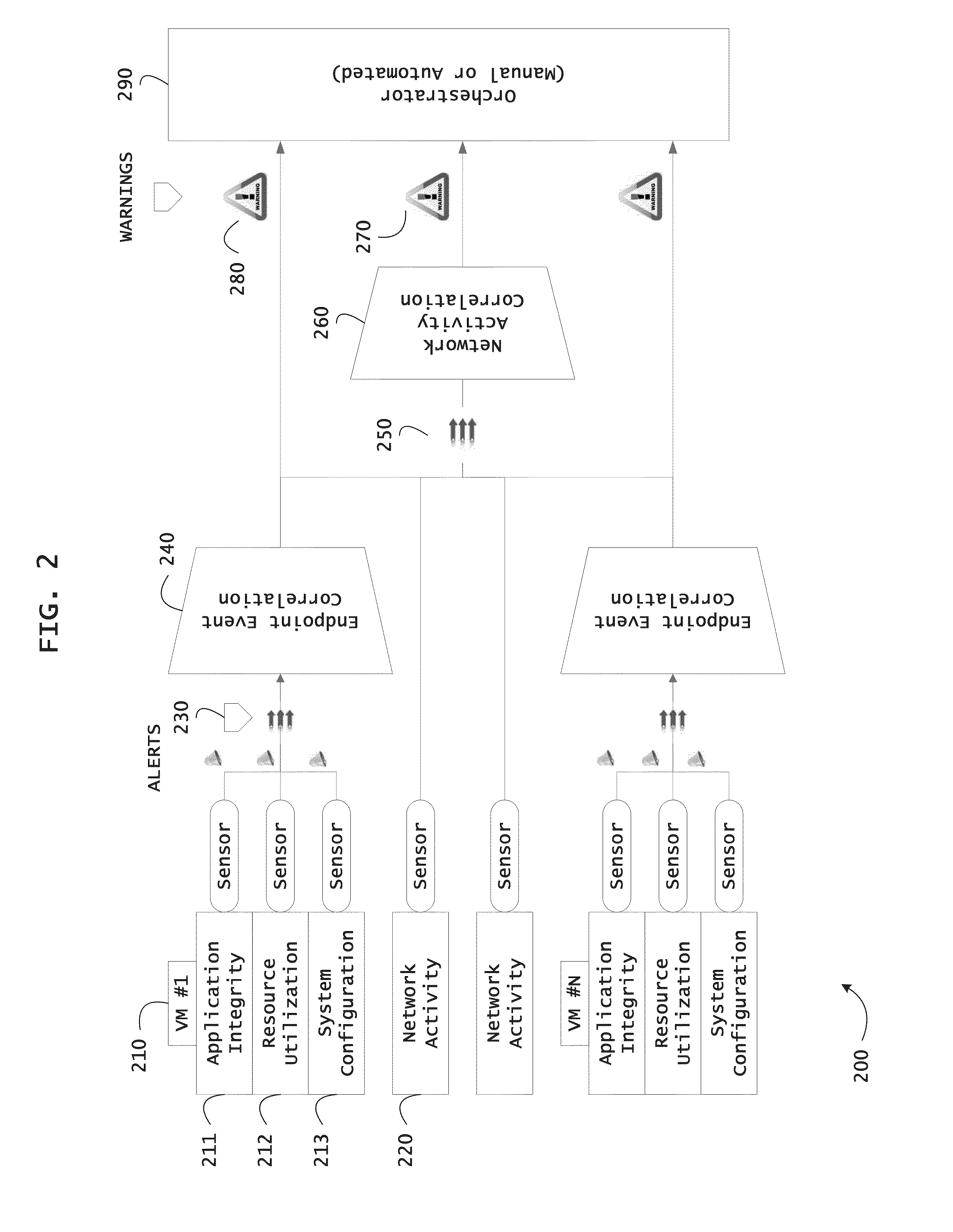Systems and methods for threat identification and remediation
a threat identification and remediation technology, applied in the field of data center virtualization, can solve the problems of not offering any level of remediation, affecting the protection of systems, and preventing data breaches or service disruptions
- Summary
- Abstract
- Description
- Claims
- Application Information
AI Technical Summary
Benefits of technology
Problems solved by technology
Method used
Image
Examples
example trust
Orchestration Architecture
[0138]FIG. 8 is a block diagram of an exemplary architecture 800 for trust orchestration including a trust orchestrator 430, a network analyzer 830, and a device 560. The architecture 800 can be used to correlate a plurality of events for determining runtime operational integrity of a system. FIG. 8 is described with continued reference to the embodiments illustrated in FIGS. 4, 5, and 7C and with reference to FIGS. 12 and 13. However, FIG. 8 is not limited to those embodiments.
[0139]As shown in FIG. 8, the trust orchestration architecture 800 may include an endpoint trust agent 510 on a device 560, a network analyzer 830 that may include a network activity correlator 831, an endpoint assessment service 820, a service provider for orchestration and / or policy enforcement point services 860, and a trust orchestrator 430 that may include a trust broker 407, a system event correlator 410, a trust supervisor 846, and a remediation controller 848.
Trust Orchestrat...
PUM
 Login to View More
Login to View More Abstract
Description
Claims
Application Information
 Login to View More
Login to View More - R&D
- Intellectual Property
- Life Sciences
- Materials
- Tech Scout
- Unparalleled Data Quality
- Higher Quality Content
- 60% Fewer Hallucinations
Browse by: Latest US Patents, China's latest patents, Technical Efficacy Thesaurus, Application Domain, Technology Topic, Popular Technical Reports.
© 2025 PatSnap. All rights reserved.Legal|Privacy policy|Modern Slavery Act Transparency Statement|Sitemap|About US| Contact US: help@patsnap.com



